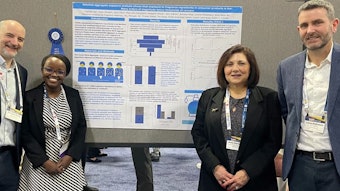Science and perfumery have been inextricably linked from the beginning of commercial perfumery. Perfumery was founded upon extracts of natural products, but as the demand for fragrance increased it was necessary to find ways of supplementing them. The successful synthesis of aroma chemicals started in the 19th century. In 1833 Dumas synthesized camphor, and in 1837 Liebig and Wohler synthesized benzaldehyde. However, progress was relatively slow as the rapidly growing science of organic chemistry was first focused on synthesizing dyes for the textile industry. The pace of change increased rapidly in 1875 and 1876 with two major discoveries of synthetic routes to coumarin by Perkins and vanillin by Triemann and Reimer. These aroma chemicals are credited with the establishment of the synthetic perfume chemical industry. The Grasse perfume industry, whose roots were firmly embedded in naturals, ignored synthetic aroma chemicals, and its dominance as the leading perfume center was gradually lost. The impact of synthetic chemistry on the perfumery industry was clearly recognized by Louis Roure,1 one of the leaders and creators of the fragrance industry. He pointed out that an error had been committed by Grasse in having neglected the vigorous application of chemical research to the study of flowers to identify and synthesize aroma chemicals.
Development of Headspace Technology As the use by perfumers of synthetic aroma chemicals grew and became accepted practice, the perfumers’ pallette expanded with evolving synthetic chemistry techniques. These new aroma chemicals brought a richness of new scents to the perfumer and laid the basis for modern perfumery. Synthetic chemicals, however, do not replace naturals but supplement and complement them. As the industry became larger and more sophisticated, perfumers again looked to nature for further inspiration. The perfumers challenged the fragrance scientists to provide the scents of plants and flowers not available in commercial quantities. This challenge was met in the 1970’s by a technique referred to as headspace analysis that utilized the development of advanced analytical techniques such as gas chromatography and mass spectrometry (GC/MS). These methods made it possible to analyze accurately the scent molecules surrounding the flowers. The headspace technique is described in detail elsewhere. It consists of enclosing the scent emitter in a suitably shaped glass vessel. The scented air is then drawn though a trap, containing an adsorption material such as Tenaxa, by a pump for between half an hour and two hours. The adsorbed scent is then extracted by a small amount of solvent and analyzed by a GC/MS. The technique has been used for more than 20 years to study a wide variety of natural scents, Givaudan Roure, for example, has investigated over 800 flowers, plants and fruits.
In the 1980’s Givaudan Roure expanded this technique to recreate the complex olfactory scent of a location, rather than a single flower or plant. Aromascapesb of a variety of scenes, such as the Sequoia forest, Arcadia and the Ligurian coast were undertaken.










